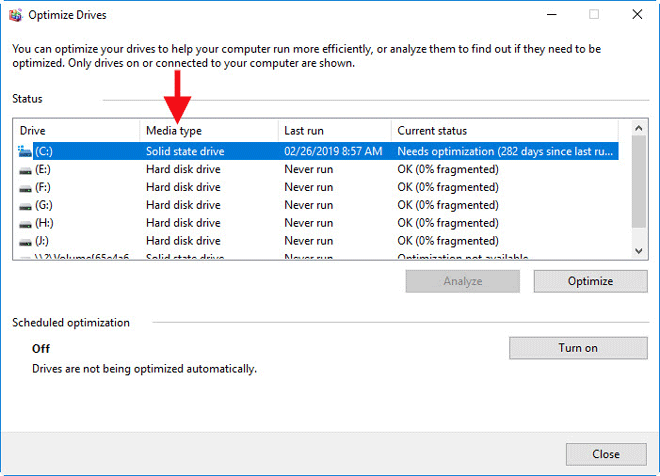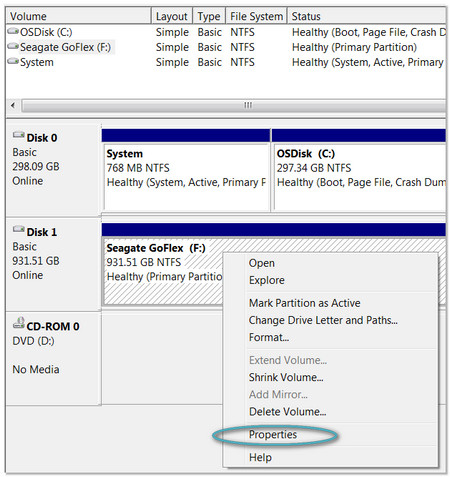
- #How to run a disk check on an ssd how to
- #How to run a disk check on an ssd full
- #How to run a disk check on an ssd password
- #How to run a disk check on an ssd Offline
Usually, e2fsck command can determine superblocks, bad blocks, block sizes, and a debugging method to rescue the hard disk. So, if you’re not an expert, don’t do it by yourself. There is a chance to get your data erased. $ sudo badblocks -v /dev/sda > badsectors.txtįor fixing the bad sectors from your hard disk, you can run this command line in your Linux terminal at your own risk. This command will generate a text file inside your directory if bad sectors are found. If you want to get an automatically generated log file of all the bad sectors of your hard disk or storage system, you may try the badblock CLI written below. You can choose which partition of the hard disk device you want to check inside your command line. This terminal command can get the read-only permission, so it will not perform the data writing test. It will take a while to generate a full-body report. Using the badblock tool in your Linux terminal, you can find out the overall status of your hard disk. Method 1: Use badblocks Tool to Check Bad Blocks on Hard Disk in Linux

#How to run a disk check on an ssd how to
In this post, we will know why the bad blocks or bad sectors occur on a hard disk and how to check the bad sectors in Linux. For SSD’s damage can be either inside the NAND flash memory or in the host interface. Linux maintains a file system hierarchy, so to check the bad sectors on your hard disk, it is essential to find out the damage source.įor a hard disk, damages can occur inside the platter, read-write head, or the actuator arm can be displaced. Depending on how badly your hard disk is affected, damages can vary over time.
#How to run a disk check on an ssd Offline
Rechecks all bad clusters on the volume (implies /R)īypasses online repair (must be used with /scan) errors found are queued for offline repair (i.e.Heat, dust, overclocking, unstable power supply, and partitioning in an improper way can be the reason for having bad blocks on your hard disk. Runs a check of index entries (less vigorous)Ĭycles within the folder structure are not checked All open process on the volume are then invalidated.

If you do not specify the size, the current size is displayedįorces the volume to dismount.
#How to run a disk check on an ssd full
Specifies the name of the files you want to checkĭisplays the full path and name of every file on the driveįinds damaged sectors and recovers readable information (implies /F if /scan is not specified)Ĭhanges the log file size to the number of KBs you specify. Specifies the drive letter or volume (followed by a colon) or the mount point Use the following basic syntax when you enter the chkdsk commands: You can use additional chkdsk parameters to enable special check phases or repair options. Enter chkdsk and the letter of the drive you want to check.Ĭhkdsk will then run in read-only mode without any further parameters, meaning it won’t change anything on the hard drive.
#How to run a disk check on an ssd password
If you’re logged on as a user with restricted permissions, you have to enter the administrator password at this point.Depending on your Windows version, only one of these options will appear in the menu. Next, choose Command Prompt (Admin) or Windows PowerShell (Admin). Right-click the Windows logo in the taskbar to open the Start menu.

First, close all windows displaying the drive you want to check, and exit any programs that might be accessing the drive.The following step-by-step guide shows you exactly how to control the tool via the command line. You do not have the PowerShell option in older versions of the operating system such as Windows 7 or Windows 8. In Windows 10, you can type in the chkdsk commands using either Command Prompt or the new PowerShell. If you run chkdsk from the command line, you have many more scanning options than if you use the File Explorer.


 0 kommentar(er)
0 kommentar(er)
